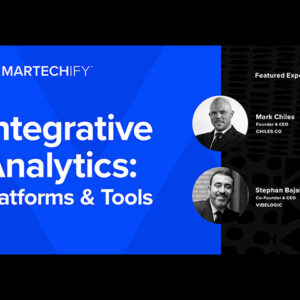CDPs and What Customer-First Marketing Means Today
- Ascend Marketing
- Customer Data Platform (CDP), Data Management and Analytics, Multi-Channel Journeys
Despite the increasing uncertainty in other aspects of daily life, customers within the digital realm enjoy more control and agency than ever before. Technology continually brings more freedom of choice in entertainment and media. Naturally, customers expect the same freedom when it comes to digital marketing, and are becoming increasingly frustrated with unskippable, irrelevant, and frivolous content. People increasingly gravitate toward brands that communicate in a manner that is relevant to them – then seek more meaningful connections over time.
Consequently, marketers must adapt by centering their strategies around customers’ communications and behaviors. A Customer Data Platform (CDP) provides a good foundation, as it allows customer behavioral data to be consolidated, segmented, and operationalized. This is critical to a customer-first marketing strategy, which requires a deeper understanding of what people want and how to deliver it to them. However, before rushing to implement a CDP, it helps to ask a few questions…
How do your brand and customer values overlap?
More and more, customers expect brands to take a stand on issues that matter to them, and reward closely-aligned companies with enduring loyalty. A 2020 survey found that 5 out of 6 of customers are loyal to brands that share their values. Commitments to diversity, equity, and inclusion are essential, as is company alignment on what company values mean in practice. Furthermore, it pays to clearly communicate these brand values to your customers.
High-growth brands incorporate company purpose into their messaging as well as their employee decision-making. Doing so requires a strong investment in first-party data to understand what customers are passionate about, then delivering content based on these insights. The details and timing of your content should match customers’ interests, or they may rapidly disengage. On that note, you might also want to ask…
Is your content useful?
As martech becomes more personalized and responsive to individual preferences and behaviors, customers have increasingly less tolerance for traditional advertising. Adapting to a customer-first marketing model means creating content focused on utility, i.e. content that provides value in exchange for customers’ time. Customers streaming digital media, for example, will likely respond negatively to irrelevant ads that intrude on their video without providing any value in return.
CDPs and other martech can be combined to achieve a granular view of customer behavior so that companies can deliver the appropriate content at the right time. The trick is knowing which combination of martech will provide the sharpest insights to inform your specific marketing strategy. This brings us to another relevant question…
Is your martech strategy helpful (or creepy)?
Using every martech tool in your arsenal may be both unnecessary and ineffective if it makes brand interactions uncomfortable for your customers. A Deloitte survey polled consumers on their feelings toward different forms of brand interactions using customer data—i.e., whether these interactions were helpful or creepy. The results: customers found methods involving in-depth tracking (such as active device listening) to be more unsettling than helpful. In contrast, methods involving an established business-customer relationship—such as sale alerts from most-purchased brands—were perceived by customers as much more valuable.
The upshot of these findings is that customers deserve agency and choice, which they feel is undermined by intrusive tracking. Customers want pleasant experiences with the companies and brands they love, which is also a good reason not to neglect consistent customer service. Strategic use of first-party data will help you understand both what undermines loyalty and what creates it.
Is it time for a CDP?
Although your business needs and existing data structures will help inform your CDP evaluation, selection is only the first step. Storing, filtering, and analyzing first-party behavioral data is no easy feat – even with the right platform. Luckily AI is making data management and insights more accessible every day. AI promises to radically reduce time to insight and action.
Current trends indicate that the marketing landscape will continue to evolve in a customer-centric direction, emphasizing personal choice, content utility, and brand-customer relationships. Adaptation may be challenging, but prioritizing customer experience can elevate your brand’s power and meaningfulness in ways that set it apart from the rest.
Interested in more content related to this topic? Learn how to implement a CDP, starting with the decision to switch and continuing throughout the setup and integration process.













